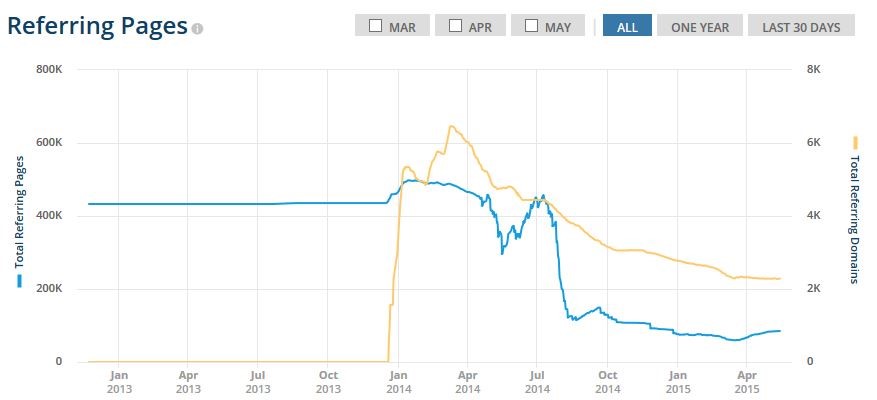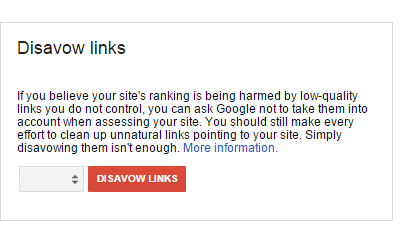In the world of SEO, we talk all the time about backlinks and how the more credible sites you get to link to your page, the better. Unfortunately on the flip side, too many of the wrong kinds of backlinks can actually be detrimental to your SEO. I like to think of it in the same way that eating too much of the wrong kinds of food will make your waistline grow. Good foods are great for your health, but the wrong kinds of foods are easier to eat.
This is the general concept behind what SEOs call “negative SEO.” This industry is not like the world of public relations where “there is no such thing as bad press,” so small businesses need to always be aware of what websites are associated with their website through links. Even though it’s something that’s been around for years you can’t escape the threat, so always reevaluate your practices and make sure you stay ahead of the game so that you never let negative SEO sink your site.
What is Negative SEO?
Negative SEO is like a poison dart aimed right at an artery of your site. It’s when someone (usually a shady competitor) decides they want to negatively affect your site’s ranking in search engines, so they build spammy links that point back to your website; thus negatively affecting your SEO. Below is an example of a chart from a Search Engine Watch article of what that might look like:
Once again, there are several ways to lower another site’s SEO ranking, but the most common way is sending an overload (we’re talking hundreds or even thousands) of spammy links to your site to water down the overall quality of your backlinks.
The Most Up-to-Date Negative SEO Tactics
As discussed above bombarding your site with sour backlinks is not the only way negative SEO shows up; others can also drag your site down by:
- Copying your content and posting it all over the internet
- Hacking your site and implanting any number of poison on it or removing quality content
- Removing any credible and quality backlinks you already have
- Stealing your online identity and creating fake profiles on sites or social media to drag down your reputation
- Dragging down your site’s overall speed by sending thousands of requests per second to your server
- Lowering your click-through rate or increasing your bounce rate, which would severely impact any ads on your site
- Linking back to your site by using spam keywords like online gambling, male enhancement products, porn keywords or more.
There are even sites out there that can help people stir up negative SEO for their competitors, including NegativeSEOServices.org, which advertises as such:
An actual advertisement like this is definitely rare, but it isn’t out of the question. In my opinion, if you market in a certain industries, like Drug Rehab Internet marketing services, plastic surgeon SEO services, and more, you’re at a particularly high risk for negative SEO.
There are also two more methods that are just gaining in popularity in 2015:
Google Insulation
One of the newest ways to enact negative SEO is what’s called Google insulation, a tactic in which somebody completely overwhelms a page by creating thousands upon thousands of competing pages that can bury a brand by watering down search results for similar sites. It’s actually a tactic that was initially invented to help out victims of fraud or unkind press/reviews by drowning out the site, but it can be exploited and used for bad instead of good.
Negative Review Attack
Another slimy way of enacting negative SEO is by filling out negative reviews of your site, company, service or product. Negative reviews can easily hurt the overall reputation of a company and, unfortunately, it’s not too hard to get a review approved on certain sites and when there are companies like NegativeSEOServices.org out there, there is no shortage of people who would stoop so low.
Using the Google Disavow Tool to Fight Negative SEO
One way to defend against negative SEO is by using the Google Disavow tool. It works by removing low quality and spammy links from your site. Think of it like reporting somebody for spam on Facebook or Twitter. It works under the same concept, even if it’s not the exact same process.
The Google Disavow Tool doesn’t actually remove the link or the site from the Internet, but it alerts search engines not to count the link when taking it into affect for SEO rankings. Essentially, it lets search engines know they should ignore the spammy link.
How to use the Google Disavow Tool
This tool is a game-changer in the world of negative SEO, but make sure you’re only disavowing the bad links and domains. Disavowing good links can be about the worst-case scenario. So, make sure this is the route you want to go, as there is some risk attached.
The Google Webmaster tool allows you to download a list of all the backlinks for your site:
Then you can create a list of all the links or domains you want to disavow (which, admittedly, may be time-consuming), head to the Google Disavow Tool page and drop your domain in the box. Then, click on “Disavow Links” on the next page and upload your list in the pop-up that comes up. Submit and you’re good to go.
So Who Needs to Worry about Negative SEO?
Many site managers and SEOs have heard of negative SEO, but luckily haven’t had any direct experience with it. In fact, chances are that those visiting this page are only reading this article if they’ve been attacked. The moral of the story: Make sure to tell your friends to be prepared and informed before something happens!
Considering negative SEO schemes have been around for a while, many people think it’s no longer an issue, but that can lull you into a false sense of security. Negative SEO is a very real problem and it never hurts to make sure you’re ready to defend against a possible attack. You can also be lulled into a false sense of security if you believe that you are a smaller company/ site and won’t be a target the same way a big site is. Unfortunately, that’s just not the case. Given how effective negative SEO can be, larger companies and sites are often not beneath squashing their competition (no matter how small) by enacting negative SEO tactics, creating a search engine monopoly, of sorts, for their site and company.
In the end, every Webmaster and SEO needs to at least be aware of what negative SEO is and how it can hurt and impact a site. If you’re not paying attention or ready to fight against a possible negative SEO attack, you will be behind the eight ball if something unfortunate like that does pop up. Make sure you know as much as you can about negative SEO so all the work you do to boost your site’s search engine ranking doesn’t go for naught.
Have you had any firsthand experiences with negative SEO? How did you handle it? Have you heard of any other negative SEO tactics that we didn’t cover? Let us know in the comments section below.





